Painters Shimizu Kazuto
Master craftsman's skill in applying and hardening the sticky lacquer evenly.
Lacquer changes with the weather, temperature and humidity. Sometimes, the lacquer shrinks and has to be reapplied the day after the work is completed. Mr Shimizu laughs: "The lacquer tells me not to get carried away.
After graduating from high school, he spent five years learning basic techniques at the Wajima Lacquer Art Technical Training Institute and apprenticed himself to his father, a lacquer craftsman. What puzzled him when he entered the world of craftsmanship was the volume and speed required. Unlike his time at the training institute, where he was absorbed in creating works of art, he was taught that "the work of a craftsman is to deliver all 100 vessels after 100 are painted". Every time he made a mistake, he would look back and wonder whether the brush length was not suitable for the lacquer or whether the temperature and humidity were not suitable. He became absorbed in the moment when his ingenuity appeared on a vessel.
Of the 10 lacquer painters in Yamanaka, Mr Shimizu is the only one who does 'variegated lacquering'. He researches old methods and incorporates them into his own techniques, such as 'Murakumo' lacquering, in which soot from Japanese candles is applied to the lacquer before it hardens, and 'Hibi' lacquering, in which egg white is applied to create natural cracks on the lacquered surface.
You tame nature and make everything look the same. That's the most interesting thing about being a painter.
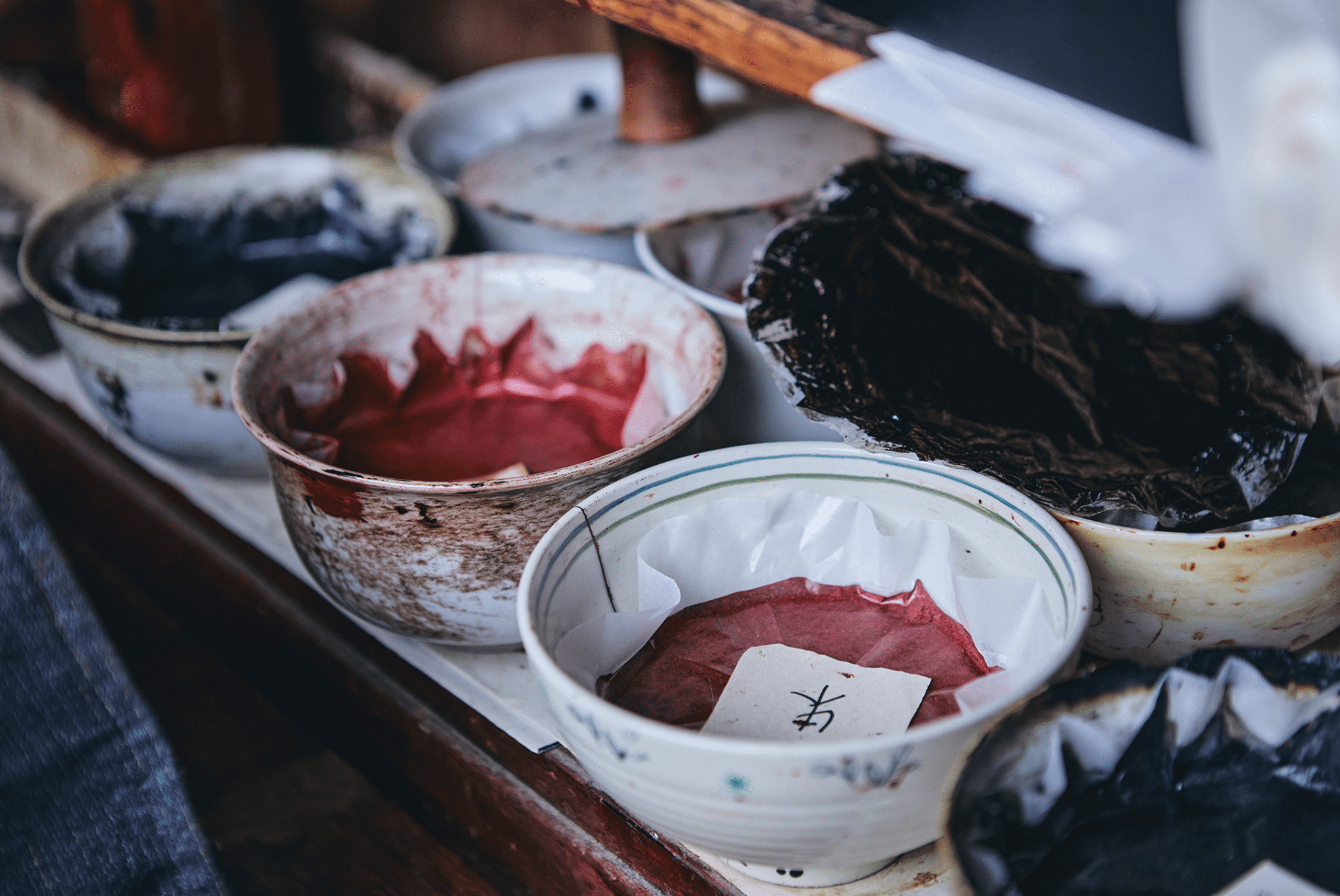
Lacquer is a valuable natural paint that can only be extracted from one tree at a rate of about 200 ml.
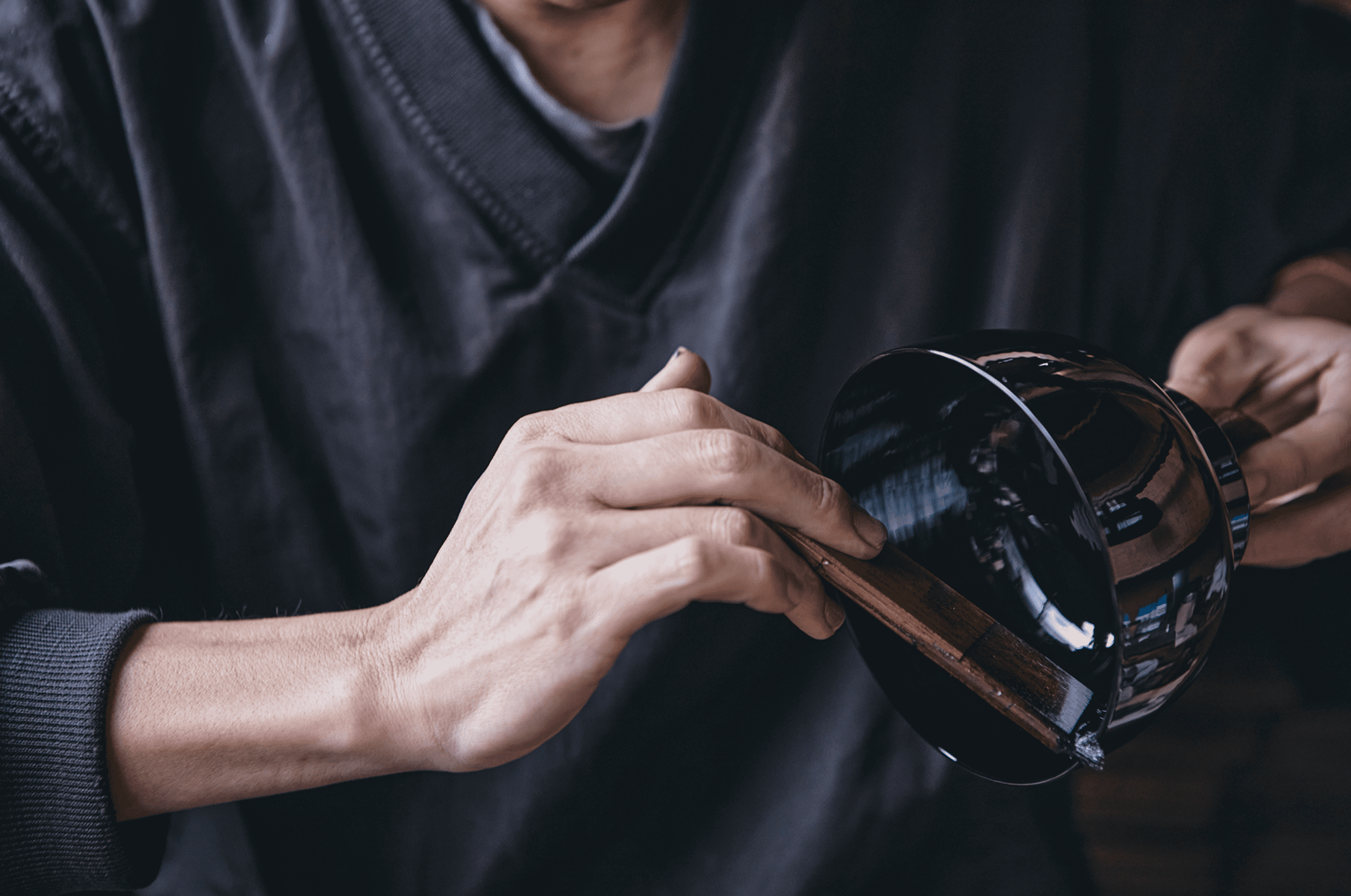
It takes about five minutes to finish the top-coating of a single vessel. The process of devising ways to improve the accuracy and speed of work is one of the joys of craftsmanship.
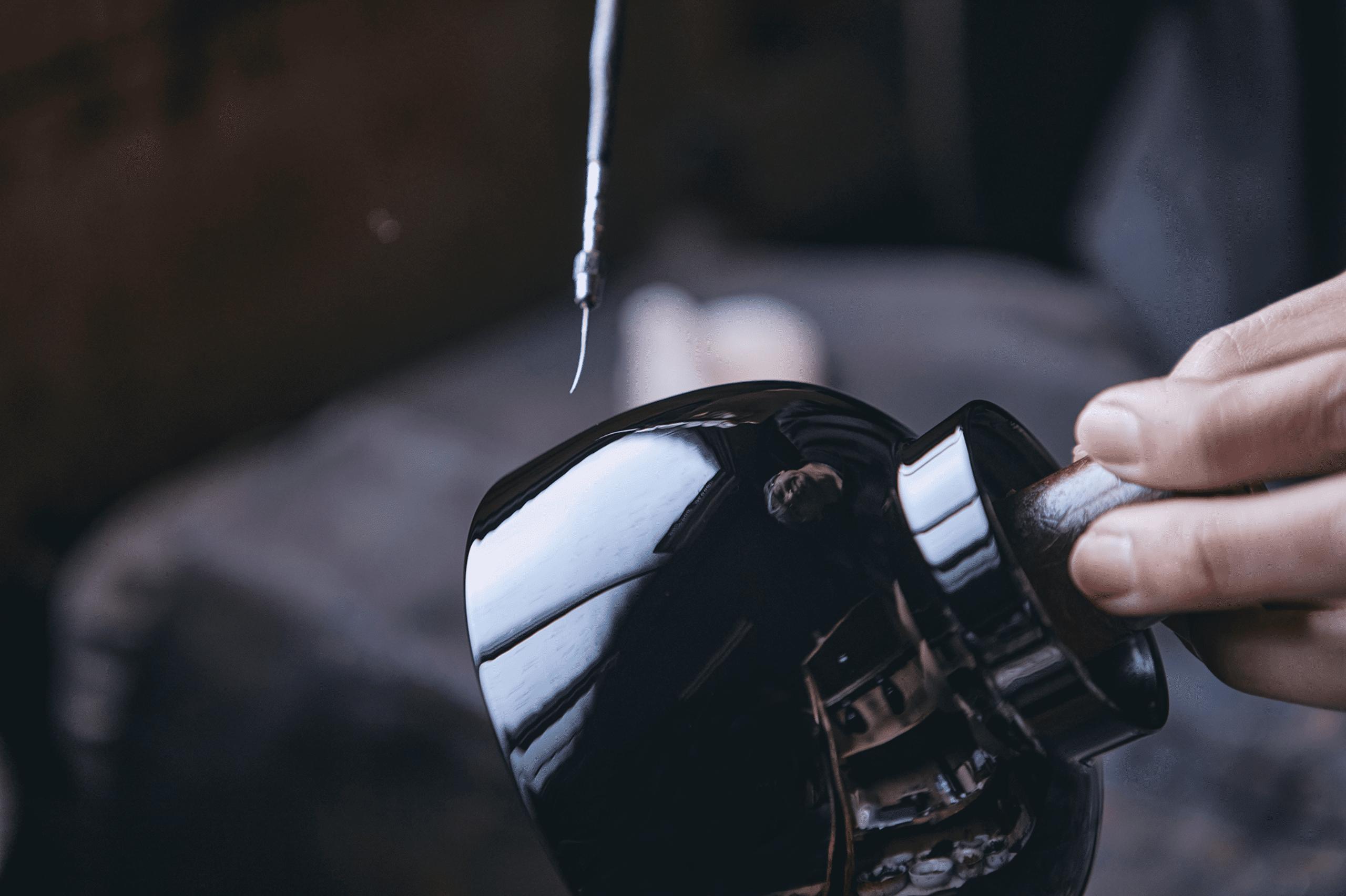
After applying the lacquer, check for dust and dirt in the air. Carefully remove hoshi (dust and dirt) from the lacquered surface.
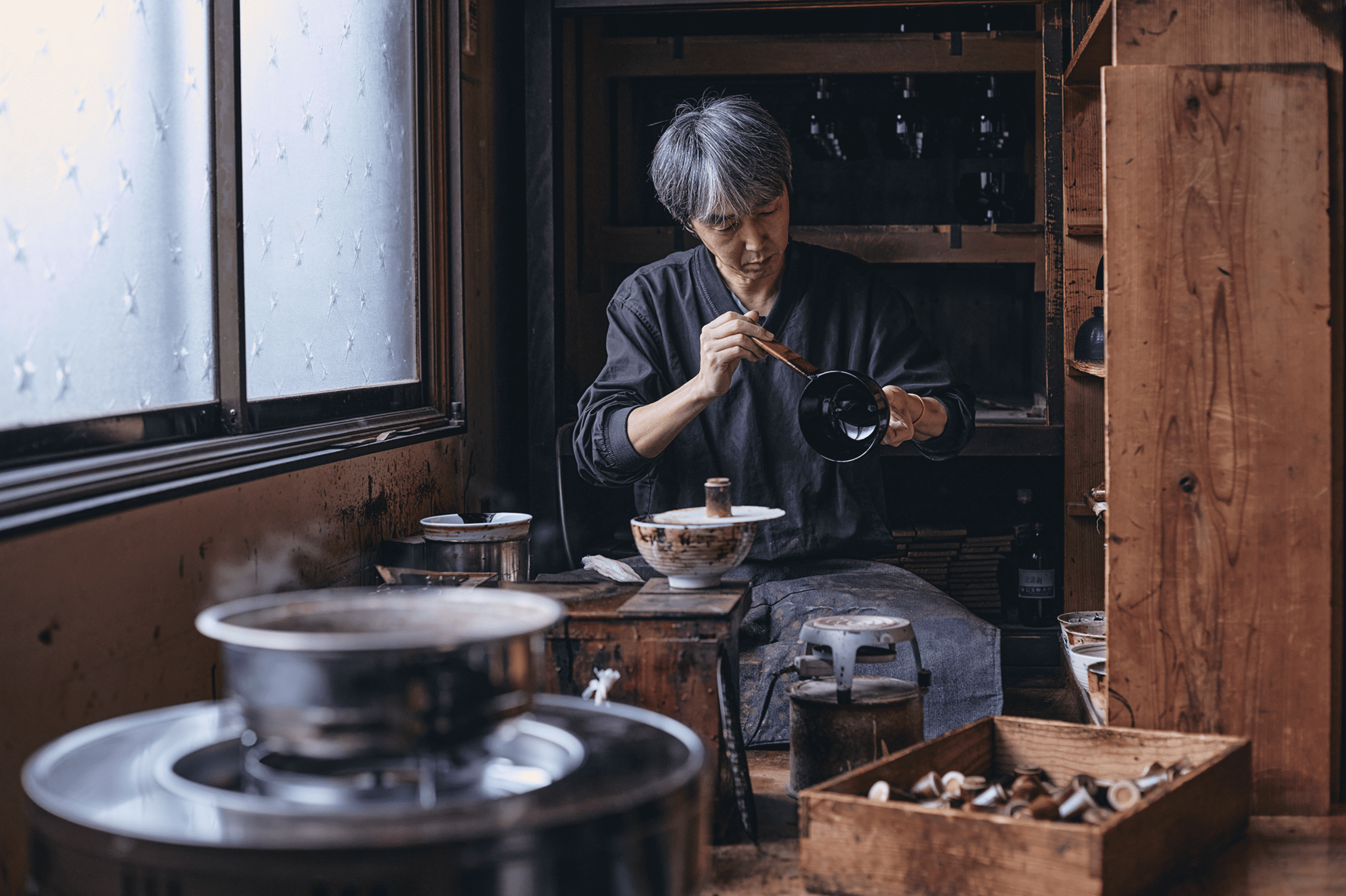
The drying time of the lacquer depends on the temperature and humidity of the day. On dry days, a vat of hot water is used to regulate the humidity.
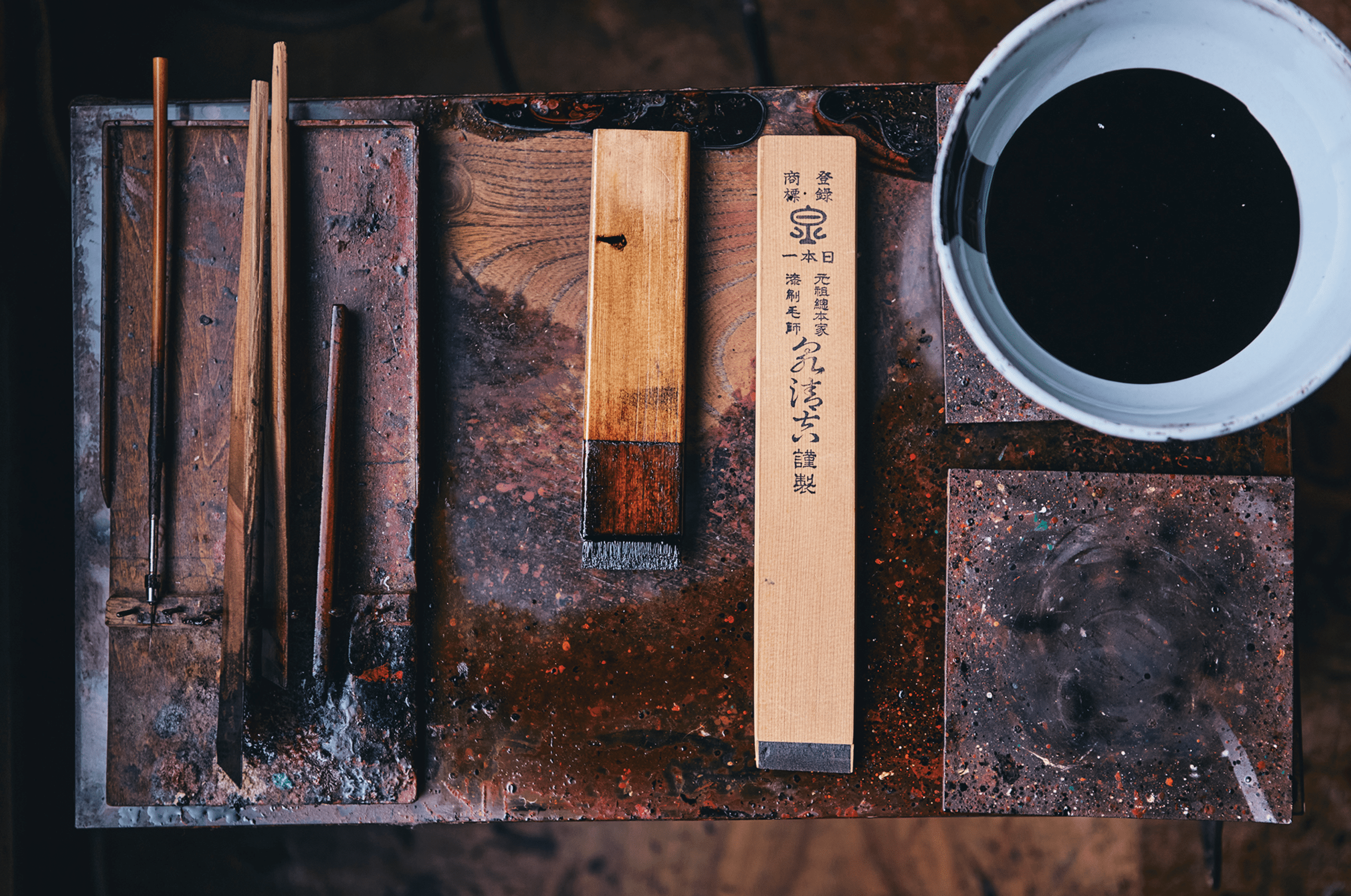
The lacquer is applied with a brush made of black human hair. In addition to being soft, the bristles are firm and are said to be ideal for applying the lacquer's consistency.
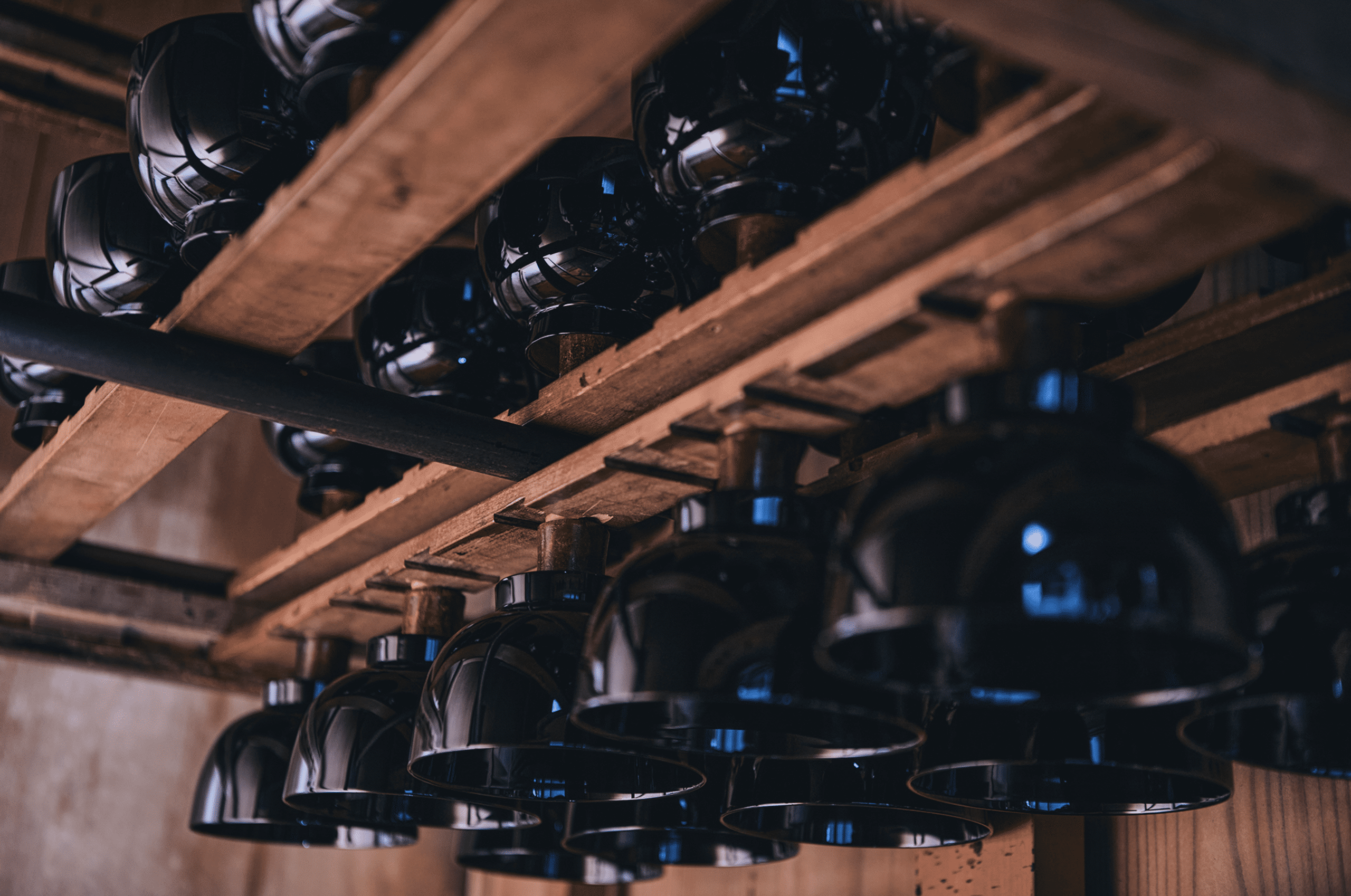
The vessels are hardened on a bath rack made to rotate every 10 minutes to ensure that the lacquer hardens evenly. The shelves are kept at a temperature of 23-25°C and a humidity of 70-75%.

